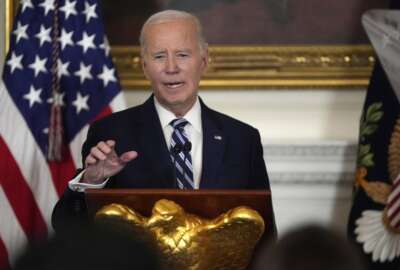Trump tax plan leaves Congress, Ryan with heavy lift
President Donald Trump's tax plan leaves much of the heavy lifting to House Speaker Paul Ryan
WASHINGTON (AP) — President Donald Trump’s tax plan leaves much of the heavy lifting to Congress, while ignoring years of hard work by the guy who will have to do a lot of that lifting: House Speaker Paul Ryan.
The one-page proposal outlined by the Trump administration Wednesday has something for everyone — massive tax cuts for businesses and a bigger standard tax deduction for middle-income families, lower investment taxes for the wealthy, and an end to the federal estate tax for the superrich — like the president and his family.
The changes to the tax code are the most concrete guidance so far on Trump’s vision for spurring job growth and fulfilling his promise to help workers who have been left behind by an increasingly globalized economy.
“He understands that there are a lot people who work hard and feel like they’re not getting ahead,” said Gary Cohn, director of the White House National Economic Council.
But Trump’s proposal lacks the hard details about making the tax code simpler and more efficient in ways that don’t add to the federal government’s mounting debt. These are key Republican goals that would require lawmakers to eliminate or reduce precious tax breaks enjoyed by millions of Americans.
“That’s the heavy lift,” said Rep. Dave Brat, R-Va.
Rep. Chris Collins, R-N.Y., said, “There’s no question, when you lower the marginal rates, you’re going to have to take away a lot of the deductions.”
Which ones? “We have to have that discussion,” Collins said.
Ryan and fellow House Republicans have been working for years on a plan that tries to lower tax rates for businesses and individuals without adding to the debt. Tax policy has been at the forefront for Ryan, a believer in supply-side economic theory who has served as the chairman of the powerful Ways and Means and Budget committees.
Trump’s plan to cut tax rates fits nicely with Ryan’s goal. But especially on the business side, Trump’s plan lacks many of the details needed to make the numbers work.
It also omits much of the work that Ryan and other Republicans have done to craft a comprehensive plan.
For example, Ryan’s plan would impose a new 20 percent tax on imports, raising more than $1 trillion over the next decade to pay for a big reduction in corporate income tax rates.
Retailers and other big importers have railed against the proposed tax, saying it would lead to higher prices for consumer goods. Exporters, who would be exempt from the tax, love it. Ryan maintains it would help make American businesses more competitive.
Treasury Secretary Steve Mnuchin said of the tax: “We don’t think it works in its current form.” He did say the administration would work with House Republicans to make the new tax more acceptable.
Meanwhile, Trump’s plan would cut the top corporate income tax rate from 35 percent to 15 percent. The top tax rate for many small business owners would be reduced from 39.6 percent to 15 percent.
But the plan offers no details on how Trump would offset these massive tax cuts, potentially adding trillions of dollars to the national debt over the next decade. The plan says simply, “Eliminate tax breaks for special interests.”
Ryan was diplomatic when asked about Trump’s tax plan.
“We’ve been briefed on what they’re going to do and it’s basically along exactly the same lines that we want to go, so we see this as progress being made,” Ryan said. “We’re moving and getting on the same page.”
Democrats were much harsher in their appraisal. “The same trickle-down economics that undermined the middle class are alive and well in the president’s tax plan,” said House Minority Leader Nancy Pelosi, D-Calif.
For individuals and families, Trump’s plan more closely resembles a blueprint released by House Republicans last year.
The administration wants to reduce the number of tax brackets to three from seven, but it has yet to determine the income levels for people who would be put in each bracket. The top income tax rate would be reduced from 39.6 percent to 35 percent.
“We will be back to you with very firm details,” Cohn said.
About 70 percent of taxpayers take the standard tax deduction when they file their taxes. Trump’s plan would double it to $24,000 for married couples, which could provide significant tax cuts for low-and middle-income families. But again, it’s impossible to know for sure without details about which income levels would be assigned to which tax bracket.
Trump’s plan would help pay for lower individual tax rates by eliminating deductions, exemptions and credits. However, with a higher standard deduction, far fewer taxpayers would itemize their deductions.
___
Follow Stephen Ohlemacher on Twitter at: http://twitter.com/stephenatap
Copyright © 2025 Federal News Network. All rights reserved. This website is not intended for users located within the European Economic Area.





